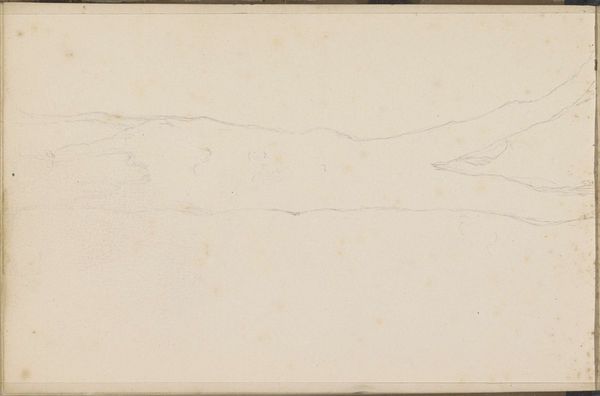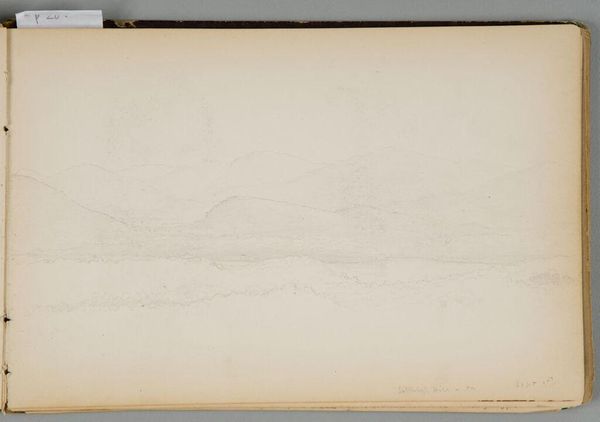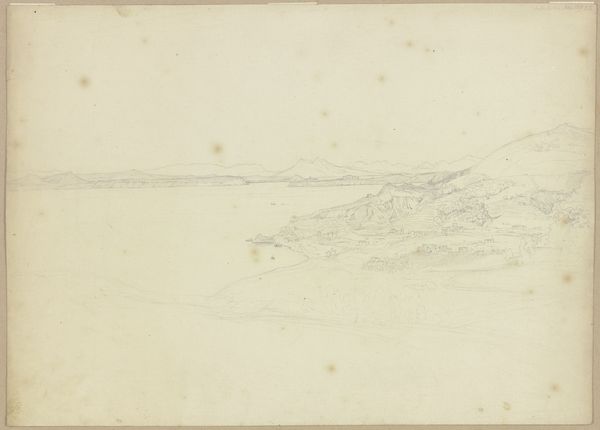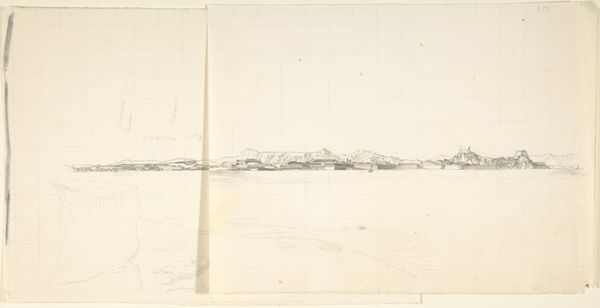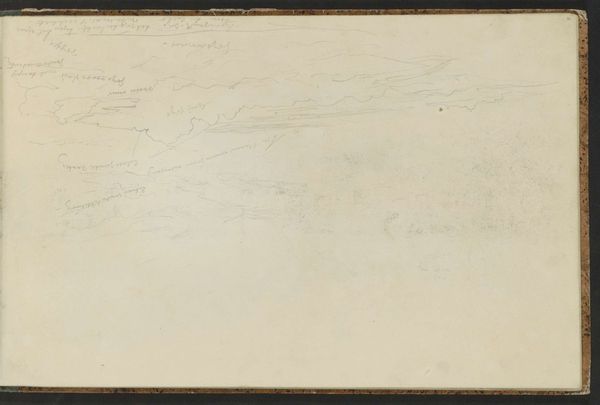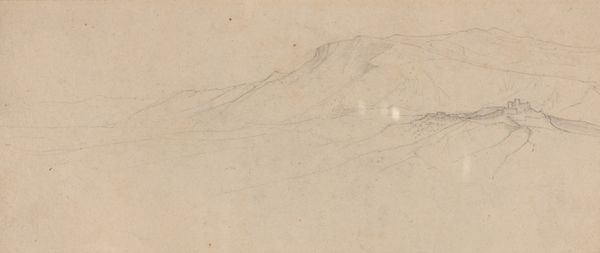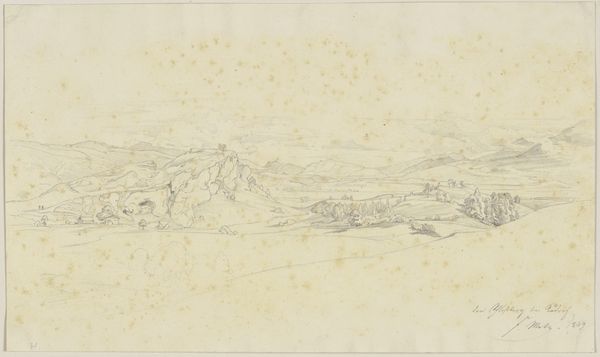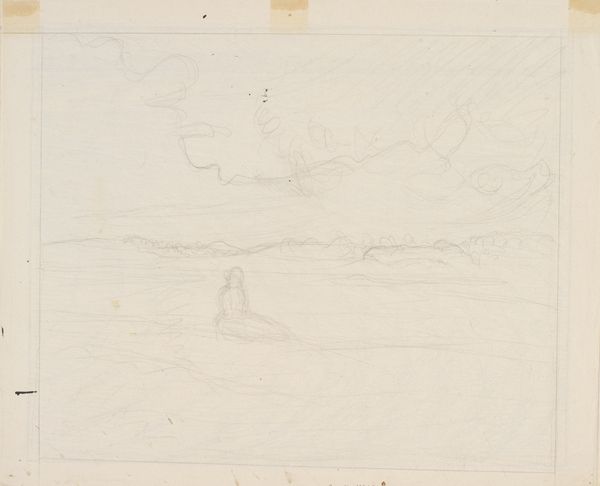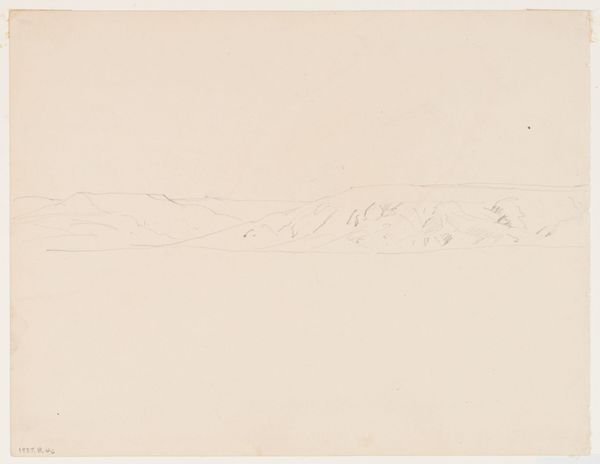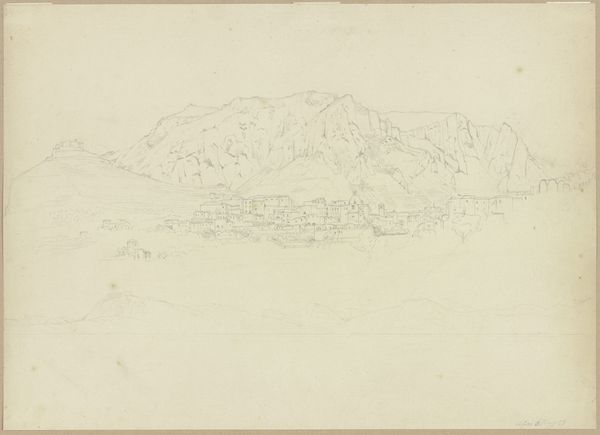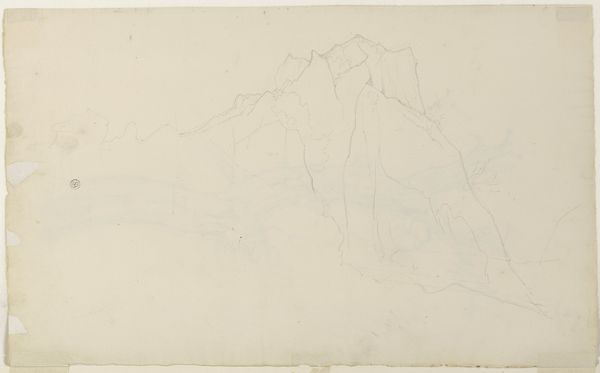
drawing, paper, pencil
#
drawing
#
pencil sketch
#
landscape
#
paper
#
form
#
pencil
#
line
#
realism
Dimensions: height 198 mm, width 347 mm
Copyright: Rijks Museum: Open Domain
Curator: We’re looking at a pencil sketch titled "Schets van een berglandschap" – or, "Sketch of a Mountain Landscape." It was created sometime between 1816 and 1846, and is currently housed here at the Rijksmuseum. Editor: My first impression is one of quietude. The delicate lines create a muted scene, almost like a memory fading into the paper. It's minimalist, but the form evokes a certain serenity. Curator: It’s a fascinating example of pure form reduced to its essential lines. Adrianus Johannes Bik really demonstrates a mastery of suggesting depth and mass using very economical strokes. The structure is all in the careful variations of pressure, the density and rhythm. Editor: Yes, and considering the historical context, I find myself wondering about Bik’s motivations. Was this purely an aesthetic exercise, or was it also a reflection of the socio-political climate? Perhaps a quiet escape from the societal turbulence of the time? Landscapes were often intertwined with national identity in the Romantic era. Curator: An intriguing thought, though I am not convinced of the link to contemporary politics. To me, the starkness leans into its focus on line, devoid of symbolic distraction. It's realism, pared to its most irreducible, honest form. The interplay between line weight is almost musical in its composition, leading the eye through the planes of the mountains and suggesting their geological essence. Editor: Perhaps, but that reduction itself carries a certain weight, doesn't it? The starkness emphasizes the bareness of the landscape, potentially mirroring a societal void or longing for something more substantial. Linearity, after all, can be about barriers as well as paths. Curator: Interesting proposition. I still find it very much the pure aesthetic endeavour of representing form, as is. Still, you've certainly widened my understanding of the artist's possible relationship to the landscape tradition. Editor: And you've heightened my appreciation for the sheer beauty of that singular form.
Comments
No comments
Be the first to comment and join the conversation on the ultimate creative platform.
